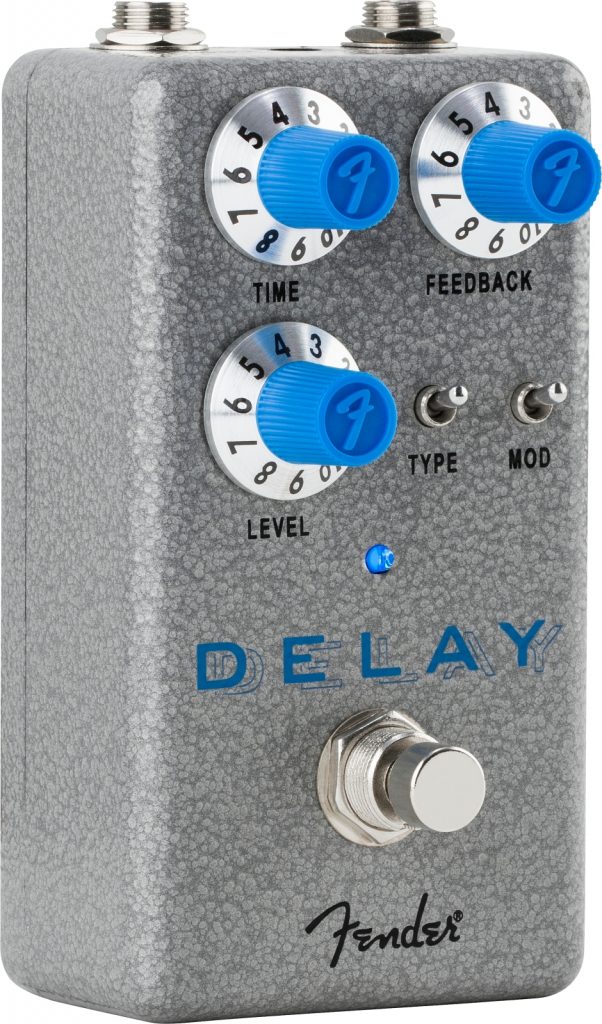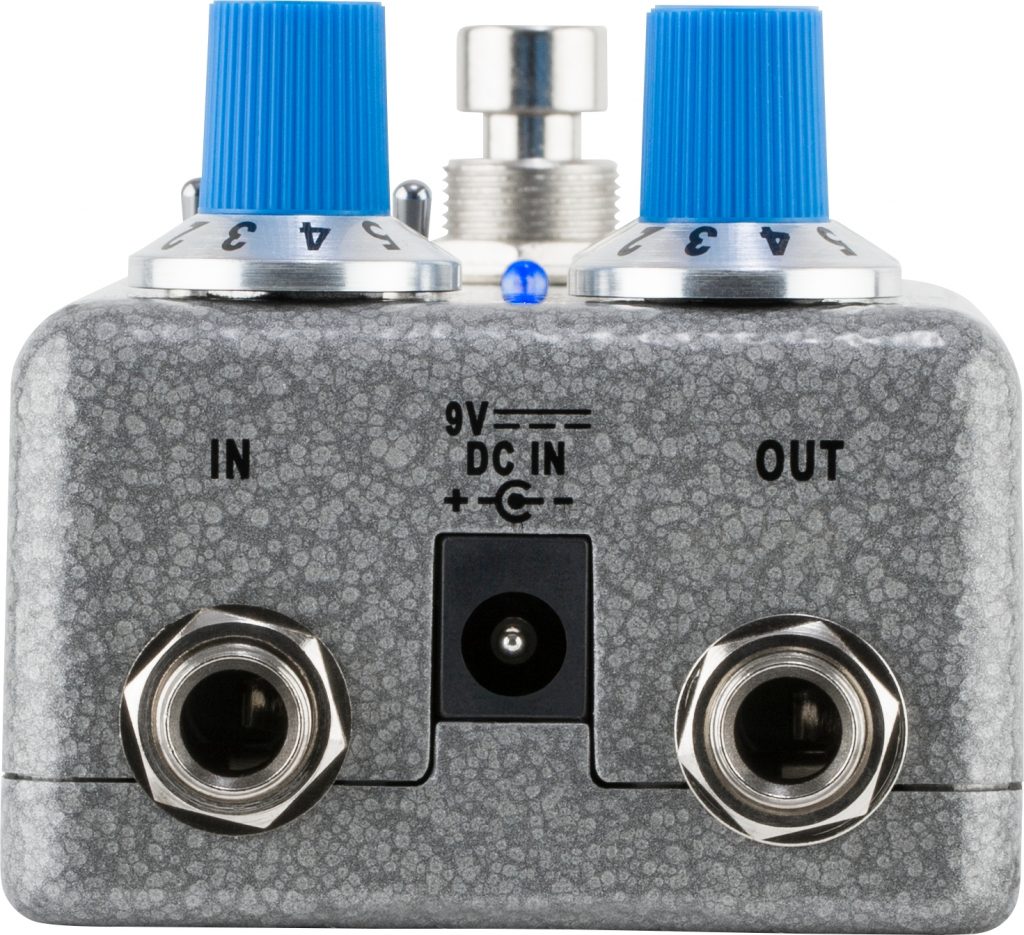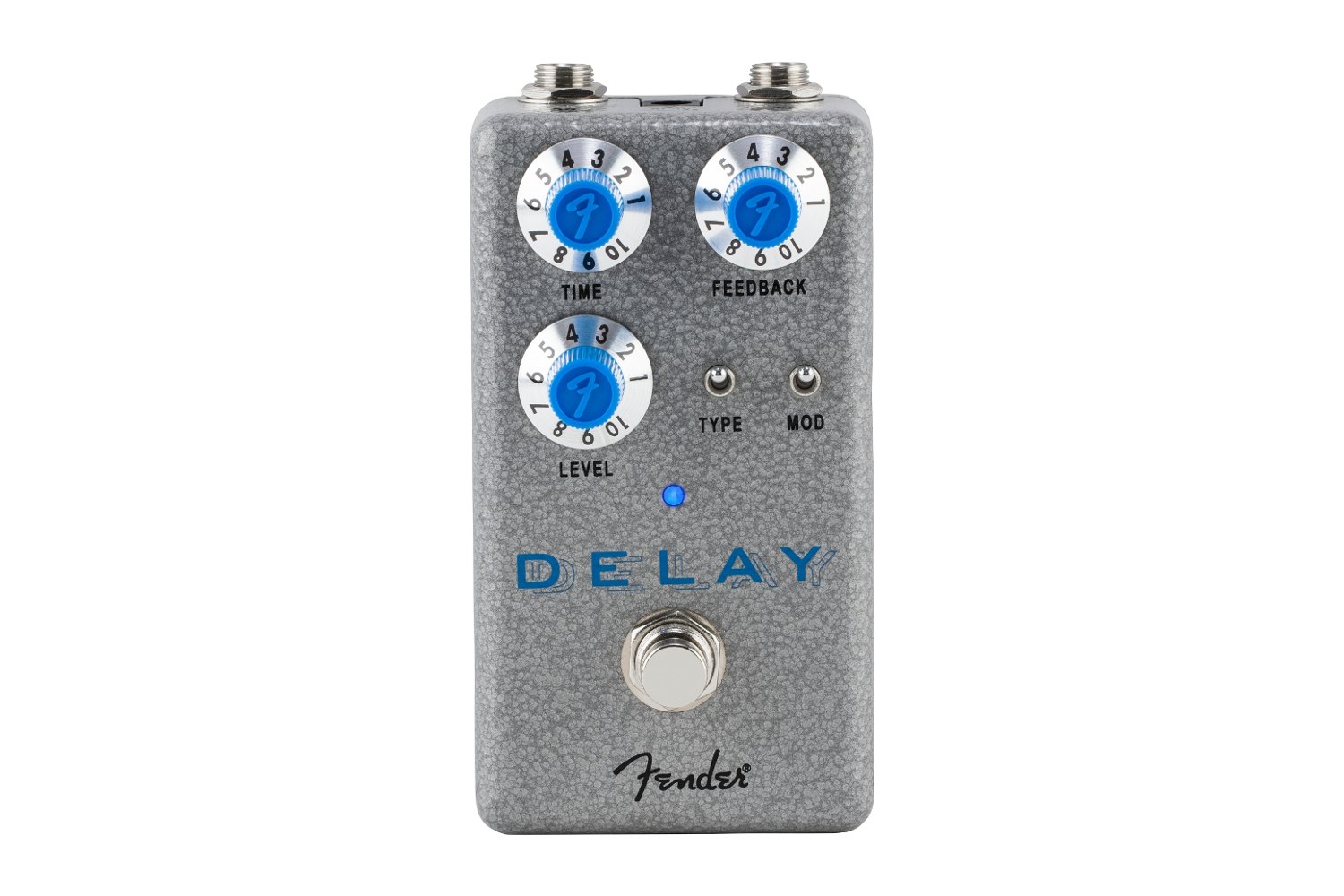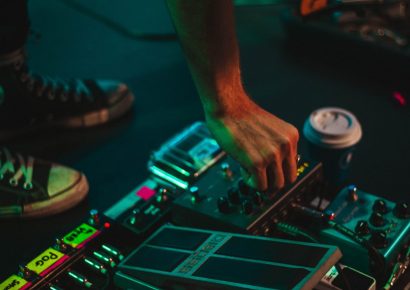Fender Australia | Price: $229
It may not have been the first cab off the rank, but when Delay pedals hit the market many moons ago, it must have blown people’s tiny minds wide open!
The glory days of tape-based, multi-head echo machines landed smack bang in the eye of the ’60s maelstrom and, hand in hand with fuzz boxes and overdrives, helped define the parameters of many a tonal quest that continues to this day. By the heady ’70s, synthesisers had shown up and the dawn of digitisation, and in turn minimisation, of sound devices was officially underway.
Read more product reviews here.
Bucket brigade circuits came marching into town, and it wasn’t long before manufacturers were able to eradicate the inherent flaws and limited lifespan of magnetic tape, squeezing arguably one of the more far-out sounds known to mankind into a functionally sized unit fit for widespread consumption that managed not to skimp on the expansive, horizon-broadening sound coveted by Pink Floyd fans everywhere. Skip ahead one generation to the ’80s, the first fully-digital delay hits the market and from there all bets are off. Today the humble delay pedal is much less the sky-high outlier that it once was, as it has firmly implanted itself as a staple of any and every self-respecting rig.
The Hammertone Delay aims at a discerning, more sensible echo connoisseur. Technically speaking, it is more closely related in timbre to a cleaner, more present digital signal path than the crotchety old tape machines or well-meaning yet considerably darker-tailed bucket brigades, while managing not to leave either behind. Relative to the Space Delay from the same series, this offering is simultaneously more crisp, agile, and versatile in that it is designed to offer not one variation on a theme but three representations of a famed artificial acoustic space.

Position one on the type toggle is a simple digital fingerprint that goes from chirpy slap back to long, Eno-inspired width. Position two is a simple, tastefully dark analogue delay for if and when you too need to hang your oversized hat on the Joshua Tree. Position three reaches back further into history with a vintage-inspired, rockabilly-baiting tape echo. As with its spacey brethren, the mod switch sends things seasick and helps to smooth out some of the presence in the tails to create a more ambient, washed-out texture, especially at longer feedback rates.
Interestingly, this particular pedal is the least kooky of the Hammertone line. In a lot of ways, this makes it the most essential in the sense that if you think of this series as a big bag of tricks, then this is the trick you reach for when you just can’t quite get your sound over the line. Delay has historically not only been utilised for its ability to send a song into the stratosphere but also for its propensity for getting things moving in a practical, behind-the-scenes sense. Lead guitarists love the way that a short repeat can thicken up a solo and set that shining moment a little wider than the rest of the band. On vocals, the clarity in the upper-mid-portion of a frequency graph of the effected signal makes for a less muddy mix and helps to set a reverb send just back from a singer’s voice enough to help it not get lost in the wash. All of these tricks and more are well and truly on tap here and it would not surprise me if that means that the rest of the Hammertone Brat Pack would be lost without the clear-mindedness of this Donatello to the other three Ninja turtles.
All of the pedals in this series that I have tried have felt tough as a house brick. The slightly smaller than usual chassis has a reliable heft to it that inspires confidence in its longevity while the top-mounted jacks and true bypass signal path mean it is scrubbed up and ready to join your team of sonic surgeons in the operating theatre. Fender obviously has the working musician in mind here and this steady footing, coupled with Swiss Army Knife functionality, sharp price point, and aesthetic simplicity means that picking one up is as much a no-brainer as uncovering its quirks is fun.
It feels a little reductive to write about a pedal so packed with features with such a utilitarian tone but I feel like such is the success of this design. Too many time-based effects, especially delays, stretch immediately into the furthest reaches of the galaxy or try to laundry-list each and every combination of the whole history of tempo in a DSP for which you need an engineering degree and a solid month hunched over in a darkened room to navigate. While there is absolutely a time and place for those cavalier spelunkers, it is refreshing to plug in a pedal and know exactly how to manipulate it and have it come good on the promise of playing an all-important supporting role at the cornerstone of your empire. That is not to say that you can’t take it far and wide, oscillating off into the twin sunset of Tatooine as I enjoyed doing.
Simply put, appreciated the fact that here is a pedal that feels reliable and relatable both structurally and sonically. An old friend who has come to help you move house or the oil can that greases the squeaky wheel, the Hammertone Delay should be a welcome, useful, and helpful addition to a broad spectrum of boards.

Head to Fender for more information.

